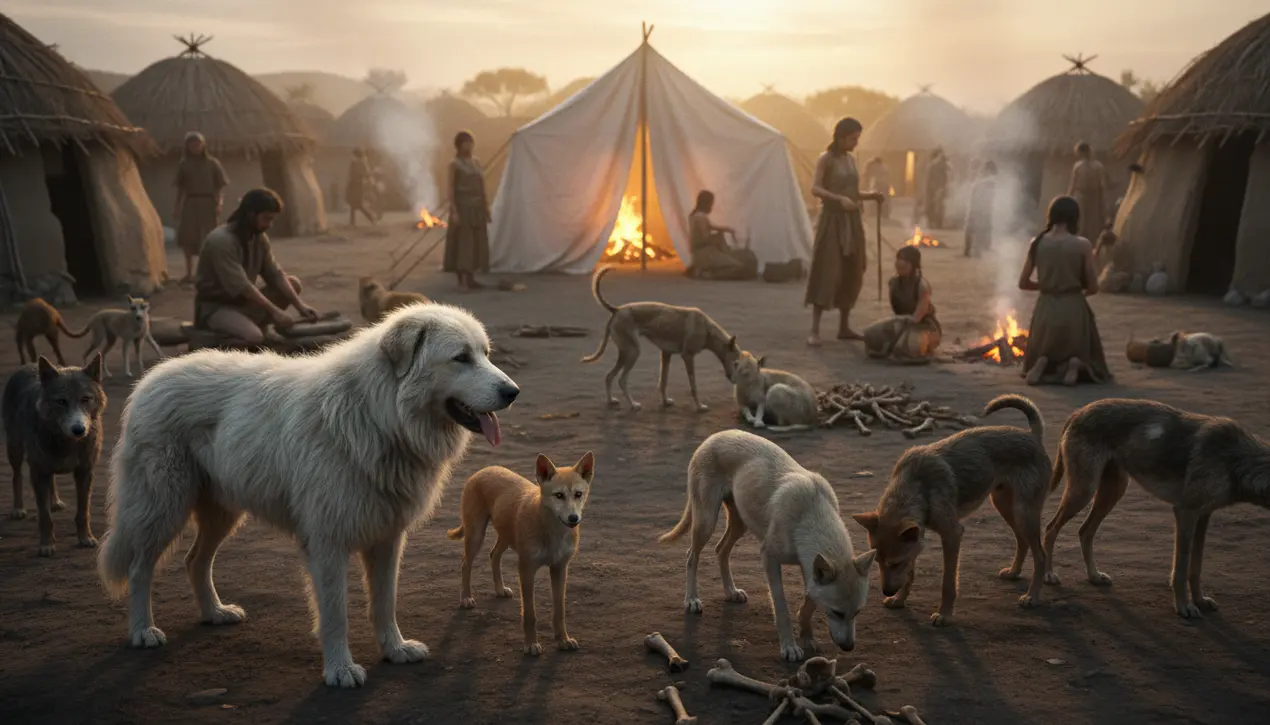
SciencebiologyEvolution and Ecology
Dogs came in wide range sizes shapes before modern breeds.
RA
Rachel Adams
3 hours ago7 min read2 comments
The profound and rapid transformation of the domestic dog, a journey initiated not by modern kennel clubs but by ancient, mutualistic bonds with humans, stands as one of the most compelling narratives in evolutionary biology. Long before the Victorian era's obsession with pedigrees and breed standards carved canines into distinct, hyper-specialized forms, a spectacular diversity of size, shape, and temperament had already blossomed.This wasn't the work of deliberate, controlled breeding in the contemporary sense; it was a powerful, natural experiment in co-evolution, driven by the simple, daily act of sharing a campsite. Recent genomic studies, which read the historical record written in DNA, reveal that the critical junctures of dog diversification occurred astonishingly fast after their initial divergence from wolves.As early human societies transitioned from nomadic hunter-gatherers to settled agriculturalists, a new ecological niche opened—the village. Dogs that were less fearful, more attuned to human gestures, and willing to trade vigilance for food scraps found themselves at a tremendous advantage.This self-domestication, a process of natural selection for tameness, had a cascading effect. The same genetic pathways that influence behavior, particularly those linked to the neural crest cells which govern fear and aggression, are also deeply entangled with physical traits.This phenomenon, known as the domestication syndrome, helps explain why selecting for a friendly disposition inadvertently unlocked a vast reservoir of phenotypic plasticity. Consequently, within a relatively short span of a few thousand years, the canine family tree exploded with variety.You had massive, mastiff-like dogs capable of guarding livestock and pulling loads alongside diminutive companions that could fit in a lap, their smaller stature possibly a paedomorphic trait linked to prolonged social bonding. Sighthounds with deep chests and aerodynamic builds emerged to run alongside hunters on open plains, while sturdy, tenacious terrier-types were shaped to control vermin in grain stores.This pre-modern diversification was not about aesthetic perfection but functional adaptation to a human-dominated world. Each regional population became a living tool, its form finely tuned to the local economy and environment.The tragedy of the modern purebred, for all its predictable charm, is that it often represents a genetic bottleneck, a narrowing of this once-vibrant ancestral gene pool. Many of today's breed-specific health issues—from the respiratory struggles of brachycephalic dogs to the hip dysplasia plaguing large breeds—are the direct cost of prioritizing closed registries and extreme morphology over the robust genetic health that characterized their more heterogeneous ancestors.The story of the dog, therefore, is a poignant lesson in ecology and unintended consequences. It demonstrates the breathtaking speed of evolutionary change when two species' fates become intertwined, but it also serves as a cautionary tale about the fragility of biodiversity, even within our most loyal companions. Their history is a mirror reflecting our own, showing how our societies sculpted the natural world, first through unconscious partnership and later through conscious, and sometimes shortsighted, design.
#dogs
#evolution
#domestication
#genetics
#archaeology
#featured
Stay Informed. Act Smarter.
Get weekly highlights, major headlines, and expert insights — then put your knowledge to work in our live prediction markets.
Related News
Comments
Loading comments...
© 2025 Outpoll Service LTD. All rights reserved.